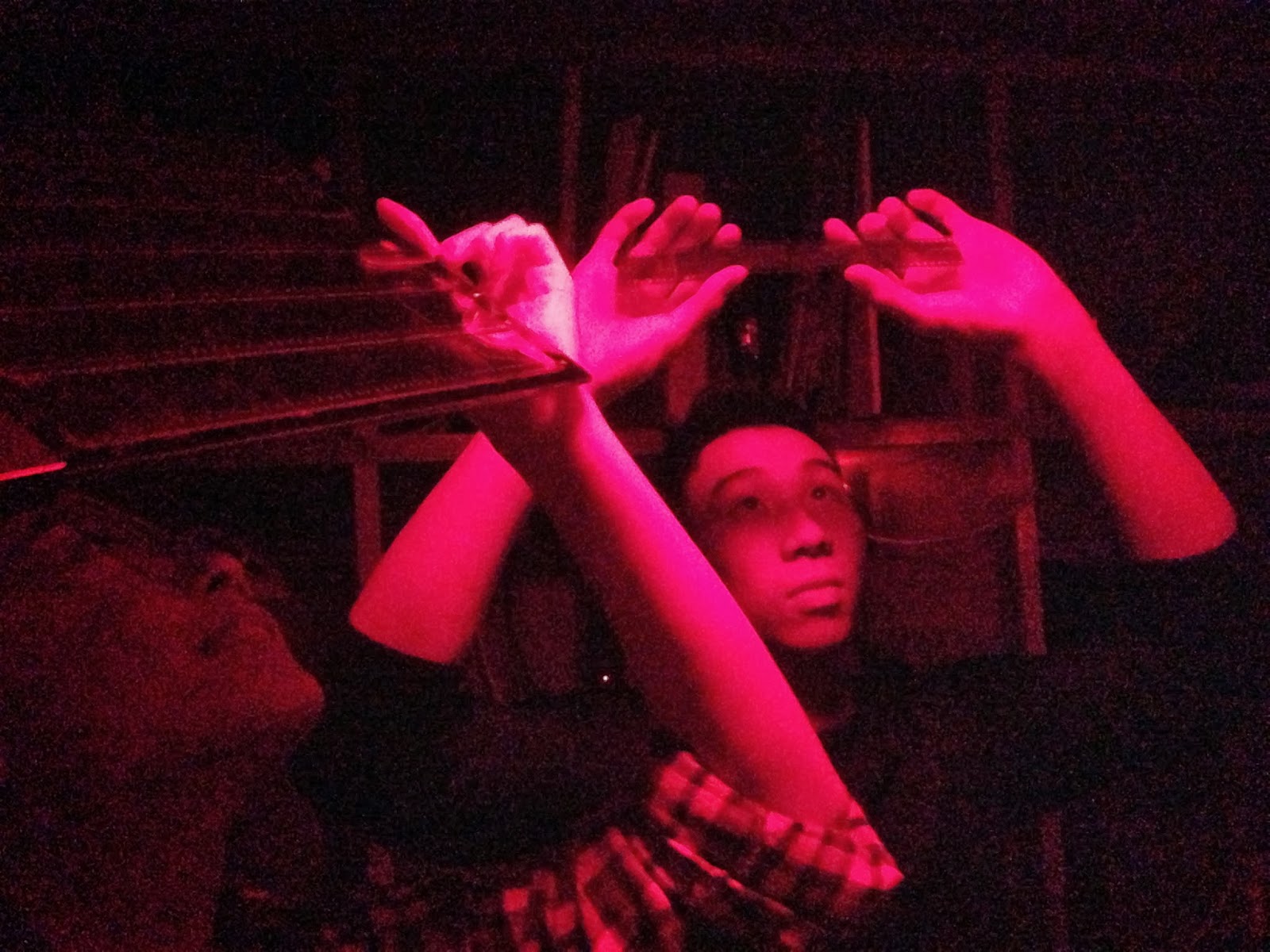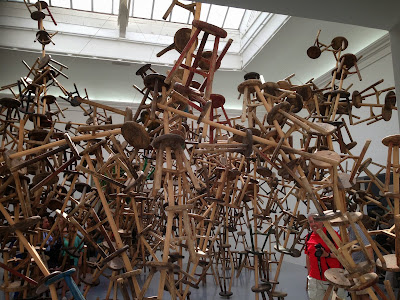The Venice Biennale is one of the most anticipated international art shows in the world. Attending the 2013 Biennale was a dream-come-true for me. Reading articles about the Biennale and viewing documentary images from the show can't come close to the experience of actually attending this event where top contemporary artists from across the globe have come together to educate, provoke, entertain and inspire.
As an Art Teacher, this infusion of contemporary art feeds my soul. I expect my students to be constantly involved in the creative process and engaging with art works in galleries and museums. It is important for me as an educator to do the same and to embrace the contemporary. As I view art, I am always drawing parallels between the art I see and the work my students have done/ are working on. The artwork that I saw will continue to be referenced in my discussions with students.
The three-days of gallery viewing was truly inspiring. Below, are a few of the most memorable highlights from Biennale di Venezia 2013.
Housed in the "French Pavilion" was the German contribution to the show. The German's bold statement about "nationalism" was exciting. As well as being housed in another nation's pavilion, among the four artists featured, none were German. The pavilion required the viewer to think about their own perceptions of classification and nationalism. The collection of artists included the controversial figure, Ai Wei Wei from China, French Film Director, Romuald Karmakar, South African artist, Santu Mofokeng and photographic artist, Dayanita Singh, from India.
Ai Wei Wei's installation called Bang was housed in the main atrium. The hanging stools created a maze for the audience to walk through, under and around. As always, his message is provocative and involves a village in the production.
What a triumph for Ai Wei Wei to be celebrated in Venice, given the circumstances for him at home in Beijing. Germany's statement was a bold and impressive one.
Dayanita Singh's piece: Mona and Myself and Sea Of Files.
The United States Pavilion was another favourite venue for me. The artist Sarah Sze created a magical world with her sculptural installations. The works consisted of masterfully arranged found-objects. Sze's complex towering pieces completely transformed the spaces.
Sarah Sze's installations spilled outside of the pavilion, enticing viewers to come in and explore further. The following four shots show details of her multiple installations. The inventiveness and playfulness of this work is inspiring.
Sarah Sze's work is alive and dynamic. She transformed the space into visual poetry. Inter connected, every-day objects danced in light and shadow.
Another favourite pavilion was the Israeli Pavilion, featuring the work of Gilad Ratman. The art featured was titled The Workshop and comprised of video, sound, sculpture and performance. Ratman documented a passage of a community of people from Venice to Israel. The piece had a high level of theatre, humour and collaboration.
Gilad Ratman - Israeli Pavilion- Venice Biennale 2013
Netherland artist, Erik van Lieshout set up a Drive-In Movie Theatre, complete with a car for viewing his film called Healing. This site specific installation transformed the space outside the Encyclopedic Palace.
Erik van Lieshout Healing 2013
Another extraordinary body of work displayed in the Encyclopedia Palace was a series of ceramics by Shinichi Sawada. Sawada is a gifted young artist from Japan who created spectacular ceramics monsters in minute detail. Reading about this artist, I discovered that he is autistic and had spent most of his life in institutions. In 2001, he discovered ceramics and the course of his life was changed forever. (Oh, the power of the arts to transform lives.)
Two works by Shinichi Sawada
Art meets life and reality TV in the work of US artist, Ryan Trecartin. The artist set up installation scenarios for viewers so they could lie on couches or beds and view his larger-than-life video productions. This is an artist that will resonate with my students with all of his popular culture references and over-the-top theatrics.
An installation that I had been really looking forward to seeing was one by ( Chilean- born, US artist) Alfredo Jarr. The initial response to the room was one of being under-whelmed. A large pool of murky water filled the centre of the space. Visitors walked in and out, initially looking quite puzzled. Then suddenly, the water started to bubble and up came a city from the depths of the lagoon.
Once again, I was reminded that art is magical as the village appeared out of no-where.
The highlight of the show was a plaque in Alfredo Jarr's exhibit (below) that gave credit to his team. In bold letters, it read: US Coordinator : Capucine Gros. Cap just happens to be one of the most amazing secondary school art students I have ever taught. She recently graduated from art school earning a BFA and then spend the past year, assisting Jarr in New York. I can't describe the pride that I felt, reading her name on the walls of this exhibit at the Venice Biennale. This reminded me that for every exhibit and behind every great artist, there is an army of dedicated, talented people who support, nurture, assist, coordinate and build.
If you are interested in finding out more about any of the artists mentioned above, please check out their websites:
Ai Wei Wei: http://aiweiwei.com/
Dayanita Singh: http://www.dayanitasingh.com/
Sarah Sze: http://www.sarahsze.com/
Gilad Ratman http://galleristny.com/2013/01/gilad-ratman-to-represent-israel-at-2013-venice-biennale/
Erik van Lieshout: http://www.guidowbaudach.com/artists/Erik-van-Lieshout/works
Shinichi Sawada: http://www.artbrut.ch/en/21004/1058/sawada--shinichi
Ryan Trecartin: http://www.saatchigallery.com/artists/ryan_trecartin.htm
Capucine Gros: http://www.capucinegros.com/
Alfredo Jarr: http://www.alfredojaar.net/


























































